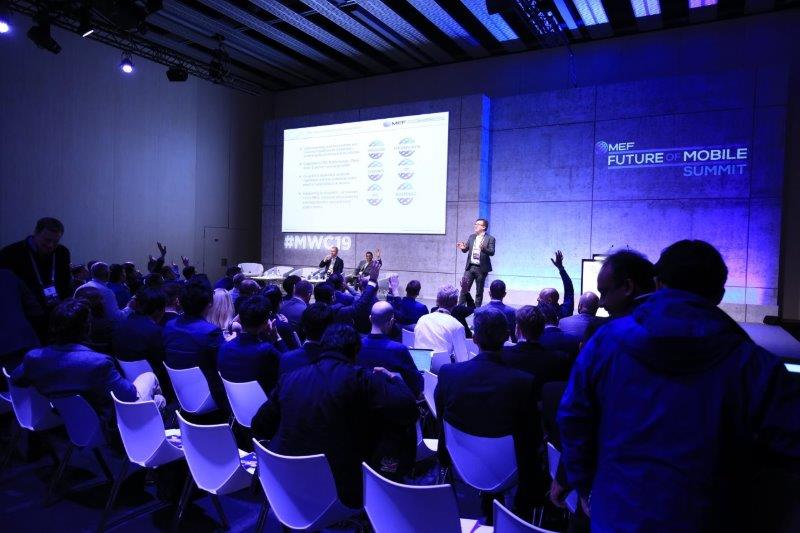Mobile fraud continues to challenge networks worldwide, highlighting the need for stronger cooperation between industry, regulators, and law enforcement. As threats grow increasingly sophisticated and borderless, coordinated solutions are becoming essential. Emerging initiatives show how collaboration and harmonisation can strengthen defences. MEF Director of Programmes, Nicholas Rossman, explains how these efforts are shaping a more secure mobile ecosystem.
The fight against mobile fraud—a global, borderless threat costing billions—has reached a defining moment. A powerful consensus is emerging across industry, law enforcement, and regulatory agencies that a siloed response is insufficient.

The clear blueprint for securing mobile communications lies in cross-sector and cross-border collaboration and the harmonisation of anti-fraud processes.
This unified message is underscored by recent, high-profile actions from international partners that consistently align with and amplify the proactive work led by the Mobile Ecosystem Forum (MEF).
The consensus is clear: by working together to establish harmonised, collective, and coordinated action, industry and government can effectively restore trust in global communications.”
Themes of Alignment: A Global Push for Security
Recent initiatives from government and law enforcement explicitly call for action that matches the industry’s self-regulatory efforts:
- Europol’s ‘Fake Number, Real Damage’ Position Paper: This report highlighted caller ID spoofing as a borderless threat causing an estimated €850 million in annual losses. It called for a coordinated response focused on harmonised technical standards to verify caller IDs, enhanced cross-border collaboration to share intelligence, and regulatory convergence to enable swift traceback of fraudulent calls.
- The UK Home Office Telecoms Charter: This major public-private agreement commits Britain’s biggest mobile networks to upgrade infrastructure within a year to eliminate the ability for foreign call centres to spoof UK numbers. It also mandates boosting data sharing, deploying AI to block suspicious traffic, and strengthening sender verification processes for secure messaging.
- Ofcom’s Joint International Statement: Convening international partners (including regulators and government agencies from the US, Canada, Australia, and New Zealand), this agreement commits authorities to strengthening international cooperation on telecoms security. Specific commitments include enhanced information sharing on emerging threats like SMS blasters and the use of AI, and the promotion of best practices in network defence.
These actions confirm three critical and interconnected themes:
- Cross-Sector & Cross-Border Collaboration: Criminal networks operate globally, necessitating an international, multi-sector response involving telecom providers, financial services, and governments.
- Harmonisation of Processes: Fraud does not respect different national standards. The focus is on aligning technical standards and national rules to create a consistent, effective defence.
- Proactive Industry Leadership: The industry is not merely reacting to threats; it is proactively developing solutions. This commitment to self-regulation and technical expertise is vital, positioning the industry as the most agile force against fast-changing, international fraud tactics.
MEF’s Blueprint for Action
The Mobile Ecosystem Forum (MEF) is driving this collaborative, industry-led response:
- Global Harmonisation Framework: The MEF’s Best Practices to Enable Trusted Business Messaging proposes a clear framework for a secure messaging environment, stressing the need for globally harmonised principles, including improved sender identity verification and the establishment of coordinating national/regional registries.
- The SMS Sender ID Protection Registry: A prime example of effective cross-sector work, this industry-led initiative—supported by MEF, UK Finance, and government agencies—provides a mechanism to share information and orchestrate the blocking of fraudulent alphanumeric Sender IDs used in ‘Smishing’ attacks.
- The Anti-Fraud in Messaging Charter: This coordinated set of accords marks a public commitment by signatories to implement real-world solutions. It provides a blueprint for action, including structured frameworks for data sharing, identity verification, and mitigation against AI-driven threats.
Law Enforcement and Regulatory Alignment
Crucially, the actions of law enforcement and regulatory agencies are now perfectly aligned with MEF’s industry-led initiatives. The priorities set by these bodies—focusing on technological commitments, global information sharing, and convergence of standards—all directly reflect the principles championed and implemented by MEF across its global anti-fraud programmes. The consensus is clear: by working together to establish harmonised, collective, and coordinated action, industry and government can effectively restore trust in global communications.





